Disclosure: This article contains affiliate links. We may earn a commission from purchases at no extra cost to you, which helps our travel content.
When I stepped off the plane onto the tarmac of Sao Tome International Airport, the humid air immediately wrapped around me like a warm embrace, carrying scents of tropical flowers and the distant ocean. As a public defender from Philadelphia seeking respite from courtroom battles, this tiny island nation off Africa's west coast offered exactly what I needed: a perfect blend of adventure and solitude. Sao Tome and Principe, Africa's second-smallest country, remains one of the continent's best-kept secrets – a biodiversity hotspot where lush rainforests cascade down volcanic peaks to meet pristine beaches. Over my week-long journey, I discovered an island that balances wild, untamed nature with thoughtful eco-tourism initiatives that protect its remarkable environment. Whether you're an experienced hiker, passionate birder, or simply seeking connection with one of the planet's most unique ecosystems, Sao Tome offers transformative experiences that will forever change how you think about our relationship with the natural world.
Preparing for Sao Tome's Jungle Adventures
Before embarking on my Sao Tome adventure, I spent weeks researching this enigmatic island nation. Despite being a seasoned traveler, I quickly realized this destination required more thoughtful preparation than most. The island's remote location, limited infrastructure, and unique ecosystem demand respect and planning.
First, medical preparation is non-negotiable. I visited my travel clinic six weeks before departure for yellow fever vaccination (required for entry) and malaria prophylaxis. The island has limited medical facilities, so I packed a comprehensive first aid kit with extra antimalarials, antihistamines, and rehydration salts.
Packing requires strategic thinking. The humid climate means quick-dry clothing is essential – I rotated between three moisture-wicking shirts and two pairs of convertible pants throughout my stay. My trusty hiking boots proved indispensable on muddy trails, while a lightweight rain jacket protected against frequent afternoon showers.
Language preparation helped immensely. Though Portuguese is the official language, I downloaded Portuguese language basics to my phone and practiced key phrases. This small effort earned smiles and opened doors with locals who rarely hear foreigners attempt their language.
Finally, I arranged accommodations and guides in advance. While spontaneity has its place in travel, Sao Tome's limited tourism infrastructure means the best guides and eco-lodges book quickly, especially during the dry season. I worked with Roça Bombaim, an eco-lodge in a restored colonial plantation, to arrange my hiking itinerary with knowledgeable local guides who could identify birds, plants, and share the island's complex history.
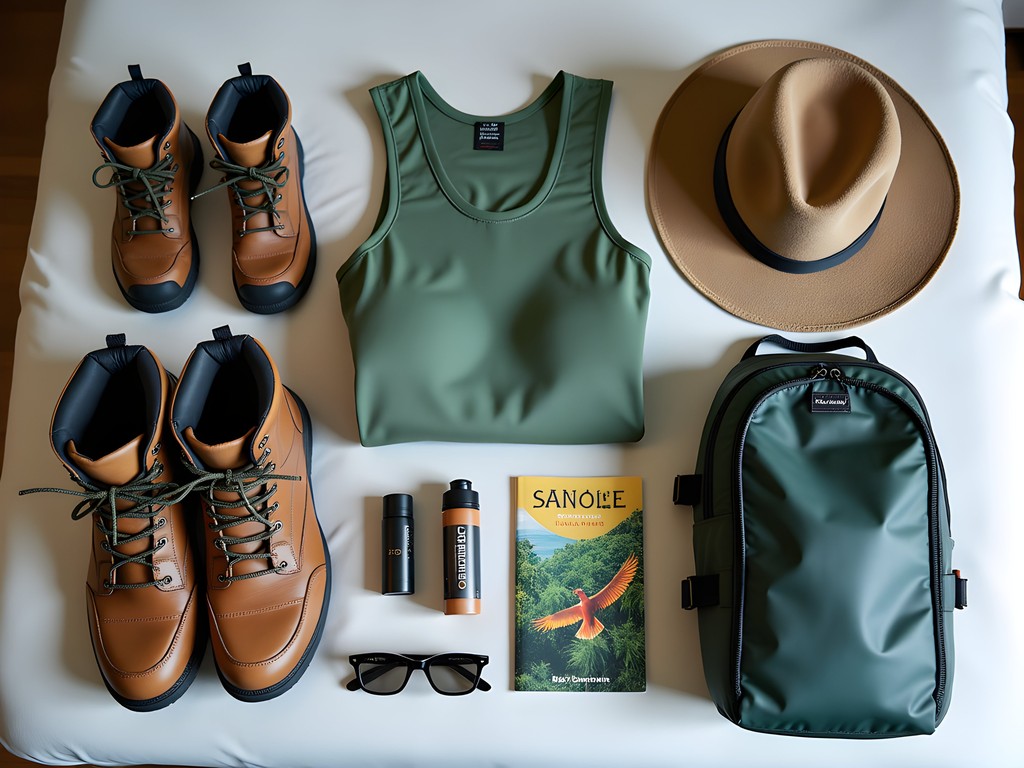
💡 Pro Tips
- Book guides and accommodations at least 3 months in advance
- Pack moisture-wicking clothes that can be hand-washed and dry quickly
- Learn basic Portuguese phrases to connect with locals
Trekking Pico Cão Grande: A Lawyer's Ultimate Challenge
Of all Sao Tome's dramatic landscapes, none captivated me more than Pico Cão Grande, a needle-like volcanic plug that rises 663 meters from the jungle floor like something from a fantasy novel. As someone who spends days constructing careful legal arguments, I found a different kind of intellectual challenge in planning this trek – one that tested both mind and body.
The journey begins at Roça Bombaim, where I met my guide, João, whose family has lived on the island for generations. His knowledge of local flora was encyclopedic, pointing out medicinal plants his grandmother still uses and identifying fruits I'd never seen before. The first hour of hiking took us through abandoned cacao plantations, where João explained the island's complex colonial history and its journey to independence.
As we ascended, the landscape transformed dramatically. The well-maintained paths gave way to muddy trails that required careful navigation. My trekking poles became essential as we traversed increasingly steep terrain. The humidity intensified, and I was grateful for every water break, during which João pointed out endemic bird species that exist nowhere else on Earth.
The final approach to the base of Pico Cão Grande requires scrambling over volcanic rock formations. While technical climbing gear and permits are required to attempt the actual peak (an endeavor for experienced climbers only), reaching the viewpoint at the base offers a profound reward. Standing there, watching clouds swirl around the monolithic spire, I felt a sense of accomplishment that courtroom victories rarely provide – a reminder that challenging ourselves in nature offers unique satisfaction.
The descent, though easier on the lungs, demanded careful footing on slick trails. We took a different route down, passing through primary rainforest where João spotted a rare Sao Tome green pigeon, its iridescent feathers catching brief shafts of sunlight filtering through the canopy.
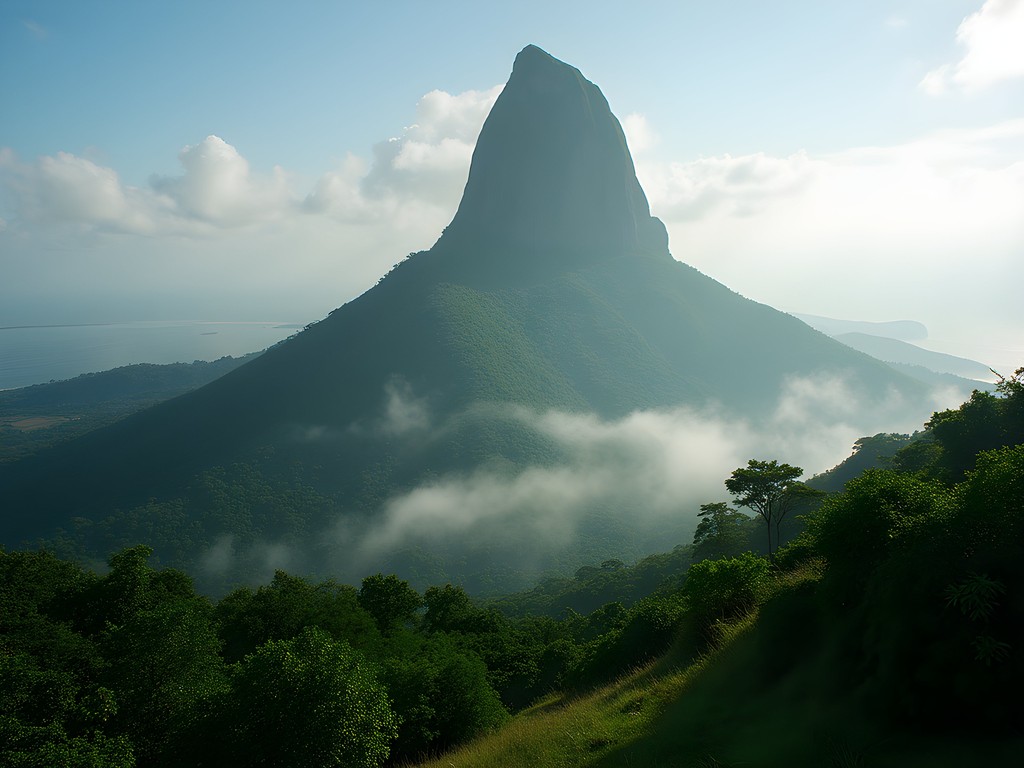
💡 Pro Tips
- Start the hike early (7am) to avoid afternoon rain showers
- Hire a local guide - their knowledge transforms the experience from a walk to an education
- Pack at least 3 liters of water per person
Birding Paradise: Tracking Endemic Species in Obo National Park
As someone who finds stories in the details others might miss – a skill equally valuable in legal briefs and birdwatching – I dedicated two full days to exploring Obo National Park, home to 28 endemic bird species found nowhere else on Earth. This remarkable concentration of unique avian life makes Sao Tome a bucket-list destination for serious birders and a revelation for newcomers like myself.
I began my birding adventure at dawn, when the forest chorus reaches its magnificent peak. My guide, Antonia, had been monitoring bird populations in the park for over a decade as part of a conservation program. Her trained ear could distinguish calls I couldn't even hear, gently touching my shoulder and pointing upward to where a Giant Weaver was constructing its massive nest.
My binoculars proved to be the most valuable item I packed, allowing intimate glimpses of the Sao Tome Ibis, critically endangered with fewer than 250 remaining in the wild. Watching this prehistoric-looking bird with its distinctive curved bill forage among fallen leaves, I understood viscerally why conservation matters – once these species are gone, they're gone forever.
By midday, we reached a small research station where scientists monitor nesting sites. Antonia shared how climate change is affecting breeding patterns and how local communities are being trained as conservation guides, creating sustainable livelihoods that protect rather than exploit these fragile ecosystems. It reminded me of community justice initiatives I've worked on in Philadelphia – different context but similar principles of empowerment and sustainability.
The highlight came unexpectedly during a quiet moment resting on a fallen log. A Sao Tome Paradise Flycatcher – male, with its stunning blue-black plumage and elongated tail feathers – landed barely three feet away, seemingly as curious about me as I was about it. In that moment of mutual observation, I felt the unique privilege of witnessing a creature that has evolved in isolation for millions of years, adapting perfectly to this singular environment.

💡 Pro Tips
- Invest in a good pair of binoculars - they're worth every penny
- Download the Birds of Sao Tome and Principe app before your trip for offline bird identification
- Wear muted colors (greens, browns) to avoid startling wildlife
Sustainable Jungle Stays: Eco-Lodges with Purpose
My legal career has taught me to look beyond superficial claims to find substantive truth – a skill that serves equally well when evaluating "eco-tourism" claims. In Sao Tome, I discovered several accommodations that truly embody sustainable principles while providing comfortable bases for jungle exploration.
I split my week between two remarkable properties, each offering distinct experiences of the island. First was Roça Bombaim, a thoughtfully restored colonial-era plantation where history and sustainability intertwine. My room featured locally crafted furniture, solar-powered lighting, and windows that caught mountain breezes instead of requiring air conditioning. What impressed me most was their water system – rainwater collection feeds showers and toilets, while greywater irrigates their organic gardens that supply the kitchen.
Meals at Bombaim became educational experiences themselves. Chef Maria prepared traditional Santomean dishes using ingredients grown steps from the kitchen – fresh cacao, tropical fruits I'd never encountered before, and vegetables cultivated using traditional methods. Each dinner included stories about the dishes' cultural significance, connecting food to the island's complex history.
For contrast, I spent two nights at Praia Inhame Eco-Lodge on the island's southern tip, where jungle meets coastline. Their six bungalows are constructed entirely from sustainable materials – local timber, recycled elements, and thatched roofs made from palm fronds. The design allows natural ventilation while providing protection from occasional rain showers.
What sets these properties apart isn't just environmental practices but their community integration. Both employ exclusively local staff and maintain educational partnerships with nearby villages. At Praia Inhame, I joined a morning session where staff were teaching schoolchildren about sea turtle conservation, part of their broader protection program that has helped stabilize nesting populations.
Each night, falling asleep to the symphony of jungle sounds – distant monkey calls, insect choruses, and gentle rain pattering on leaves – I reflected on how these thoughtfully designed spaces enhance rather than intrude upon their natural settings.
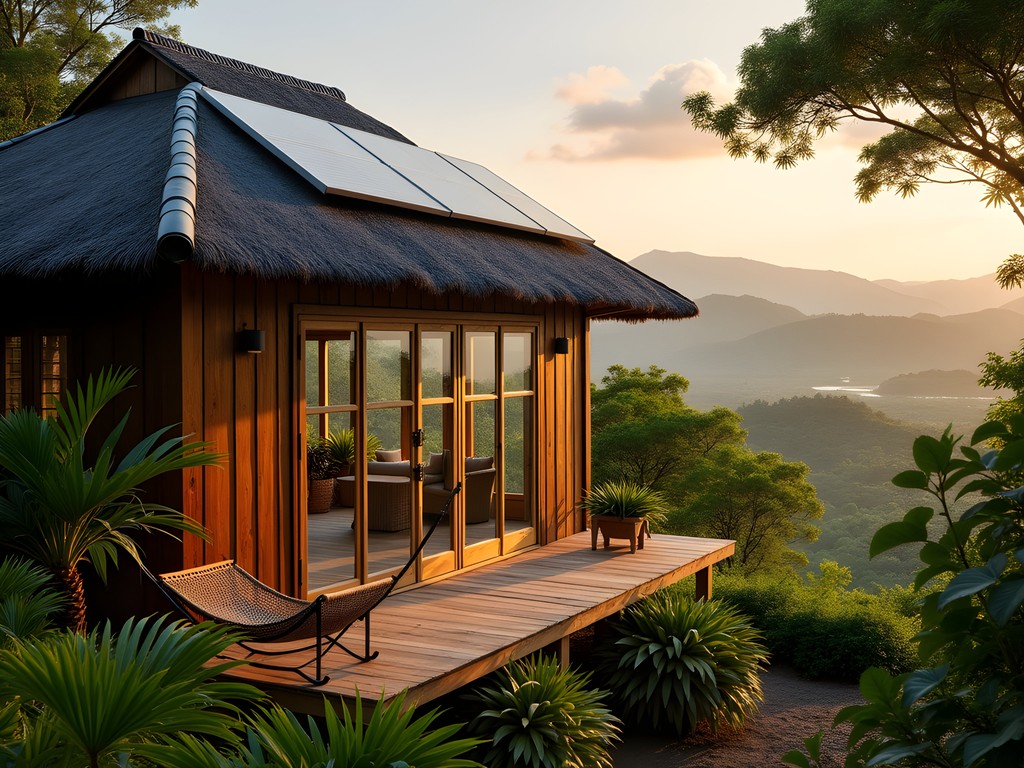
💡 Pro Tips
- Book accommodations that employ local staff and have clear conservation initiatives
- Bring a headlamp with red light setting for nighttime reading that won't attract insects
- Request property tours to learn about sustainability features
Jungle to Ocean: Coastal Trails and Hidden Waterfalls
One of Sao Tome's most magical aspects is how quickly landscapes transform – within a single day's hike, you can journey from dense rainforest to pristine coastline. This ecological compression creates remarkable biodiversity and offers hikers ever-changing scenery that keeps even long treks engaging.
My favorite day began at dawn at the eastern edge of Obo National Park, where guide Miguel led me along the Rio Abade trail. The path follows an ancient route once used by plantation workers, now reclaimed by jungle but maintained enough for adventurous hikers. The morning light filtered through the canopy in ethereal rays as we climbed steadily upward, crossing small streams on fallen logs and makeshift bridges.
About two hours in, the forest opened dramatically to reveal Cascata São Nicolau, a 30-meter waterfall plunging into a crystal-clear pool. Despite initial hesitation, Miguel's encouragement led to one of my most memorable moments – swimming in the refreshingly cool water beneath the falls, watching swifts dart in and out of the cascade while hunting insects.
After drying off and refueling with local passion fruit and banana bread from Miguel's backpack, we continued as the trail gradually descended toward the coast. The vegetation shifted noticeably – dense jungle giving way to palm groves and increasingly arid coastal flora. My water filter bottle proved invaluable, allowing us to safely refill from streams along the route rather than carrying a day's worth of water.
By early afternoon, we emerged at Praia Jalé, a protected beach where sea turtles nest seasonally. The contrast was stunning – from the enclosed green world of the jungle to the expansive blue horizon of the Gulf of Guinea. Miguel pointed out turtle conservation areas marked with simple wooden stakes and explained how local fishing communities have become environmental stewards, protecting nesting sites they once exploited.
We ended our journey with a simple lunch of grilled fish and plantains at a small beach restaurant run by a conservation cooperative. Watching fishermen mend nets while frigatebirds soared overhead, I reflected on how this island has managed to preserve connections between people and place that have been lost in so many parts of our developed world.

💡 Pro Tips
- Wear water shoes that can handle both hiking and swimming
- Apply reef-safe sunscreen before reaching coastal areas
- Respect turtle nesting areas by keeping distance from marked sites
Final Thoughts
As my flight lifted off from Sao Tome, I pressed my face against the window for a final glimpse of this remarkable island – a place where jungle-draped volcanic peaks plunge dramatically into azure waters. In just one week, this tiny nation had profoundly shifted my perspective on what sustainable tourism can and should be. Unlike more developed destinations where nature often feels like a carefully managed backdrop, Sao Tome offers something increasingly rare: genuine wilderness experiences coupled with community-based conservation that actually works. For solo travelers seeking both adventure and purpose, Sao Tome represents a perfect balance – challenging enough to feel accomplished, accessible enough to navigate alone, and meaningful enough to leave lasting impressions. Whether you're tracking endemic birds through misty forests, swimming beneath hidden waterfalls, or simply connecting with communities that have found ways to thrive in harmony with their environment, this island offers lessons that extend far beyond vacation memories. The question isn't whether you should visit Sao Tome, but rather how soon you can experience this ecological treasure before the rest of the world discovers it.
✨ Key Takeaways
- Sao Tome offers unparalleled biodiversity with 28 endemic bird species in a compact, hikeable area
- Local guides transform good hikes into extraordinary educational experiences
- Supporting community-based eco-lodges directly contributes to conservation efforts
- The combination of jungle, mountain and coastal environments creates diverse experiences in a small geographic area
📋 Practical Information
Best Time to Visit
June to September (dry season)
Budget Estimate
$100-150/day including eco-lodge, guide fees, and meals
Recommended Duration
7-10 days
Difficulty Level
Moderate

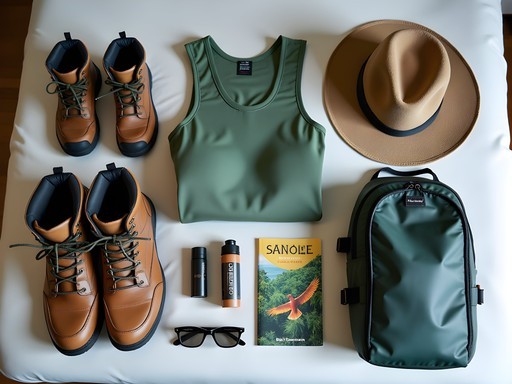


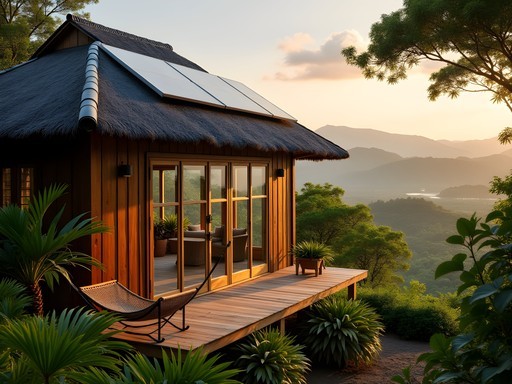



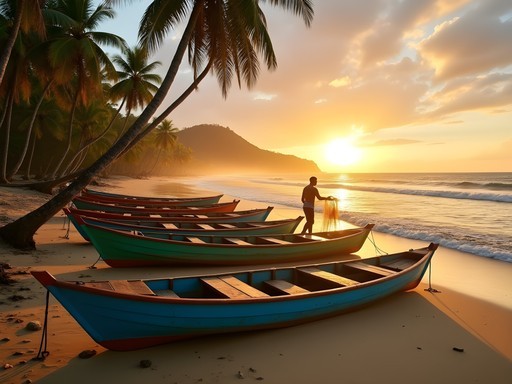




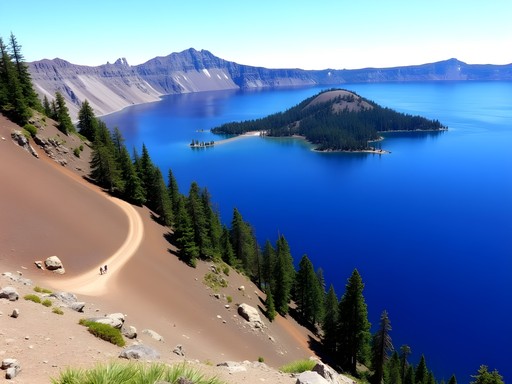


Comments
greenbackpacker
Savannah, your post convinced me to add Sao Tome to my itinerary next month! I'm especially excited about the birding opportunities. Quick question about safety - did you feel comfortable hiking solo or is it better to always have a guide? Also, how many days would you recommend to properly explore Obo National Park? I've got about 10 days total for the trip and want to make sure I'm allocating my time wisely between hiking, beaches, and cultural experiences. Thanks for the inspiration!
Savannah Torres
I'd definitely recommend a guide for all hikes - not just for safety but because they spot wildlife you'd miss and know all the hidden spots! For Obo, I'd suggest 3-4 days minimum if you're serious about birding. With 10 days total, maybe 4 days Obo, 3 days exploring beaches and coastal areas, and 3 days for cultural experiences and chocolate tours. Have an amazing trip!
Sarah Powell
I appreciate your thorough analysis of Sao Tome's ecotourism infrastructure, Savannah. Having visited several African island nations for my sustainable tourism research, I found Sao Tome's approach particularly interesting. The balance between conservation and economic development through tourism is delicate, but the island seems to be managing it well. One aspect I'd add is the importance of the local chocolate industry - the organic cacao farms are implementing impressive agroforestry techniques that support biodiversity while providing income. The bird diversity you highlighted is indeed remarkable - I documented 26 endemic species during my two-week stay. Did you notice any evidence of climate change impacts on the coastal areas or forest ecosystems?
Savannah Torres
Great point about the chocolate industry, Sarah! I did visit a cacao farm and was impressed by their sustainable practices. Regarding climate change, several guides mentioned coastal erosion affecting turtle nesting sites, and changing rainfall patterns impacting the flowering cycles of certain plants that birds depend on. Definitely concerning trends.
sunsetdiver
How did you handle transportation around the island? Rental car or local drivers?
Savannah Torres
I used a mix! Hired a driver for longer journeys (arranged through my eco-lodge) and used motorbike taxis for shorter trips around towns. Roads can be challenging so I wouldn't recommend self-driving unless you're comfortable with rough conditions.
coffeemate
How's the internet connectivity at those eco-lodges? Need to stay somewhat connected for work emergencies.
greenbackpacker
Not Savannah, but I stayed at Bom Bom last year - they had decent WiFi in common areas but spotty in rooms. Probably best to warn your work you might be unreachable at times!
Megan Martin
Excellent write-up on Sao Tome, Savannah! I visited last year while researching sustainable tourism initiatives and was equally impressed with the eco-lodges. The Praia Inhame Eco-Lodge's commitment to employing locals and their zero-waste policy is truly exemplary. For anyone planning a visit, I highly recommend bringing a good pair of hiking boots with ankle support for those jungle trails - they get quite slippery during the rainy season. My hiking boots were absolute lifesavers. Also worth noting that many lodges offer guided night walks to spot nocturnal wildlife - don't miss this experience!
coolbackpacker
Those bird photos are incredible! The endemic species look so vibrant!
sunnybuddy
This looks amazing! How difficult was the jungle trekking? I'm planning a trip for November but I'm not super athletic. Would I still be able to enjoy the hiking trails?
Savannah Torres
There are trails for all levels! Pico Cão Grande is challenging, but Obo National Park has several easier routes that are just as beautiful. Just make sure to hire a local guide - they'll match you with appropriate trails.
travellife
Just got back from Sao Tome last month and your post brought back all those amazing memories! That hike up Pico Cão Grande was no joke - definitely one of the most challenging but rewarding treks I've done. The local guide we hired (Manuel) was fantastic at pointing out all the endemic bird species. Did you get a chance to try the fresh fish at the beachside restaurants? The grilled barracuda with plantains was my absolute favorite meal there!
Savannah Torres
Yes! The seafood was incredible. I think I had barracuda almost every other night. And Manuel was my guide too! Such a wealth of knowledge about the local ecosystem.
travellife
No way! Small island, small world I guess. Did he take you to that hidden waterfall on the east side? That was a highlight for me.
freeone8433
Just got back from Sao Tome last week. If you're going, don't miss the chocolate tasting tours! Perfect complement to all the hiking.
happylife
Ooh chocolate tasting sounds amazing! Was it from local cacao?
freeone8433
Yes! All locally grown and produced. The island has this amazing cacao history. Perfect post-hike reward!
happyphotographer
Those bird photos are incredible! What lens were you using? I'm planning a trip there next spring specifically for wildlife photography and wondering what gear to bring. Was it very humid for the camera equipment? I'm thinking of bringing my camera rain cover but not sure if it's necessary year-round.
Savannah Torres
Thanks so much! I used a 100-400mm lens for most of the bird shots. And yes, definitely bring protection for your gear - the humidity is constant and afternoon rain showers are common. A good silica gel pack in your camera bag is essential too!
Venture X
Premium card with 2X miles, $300 travel credit, Priority Pass